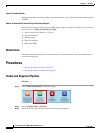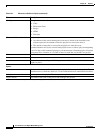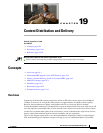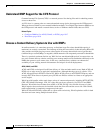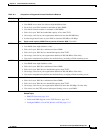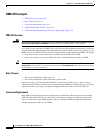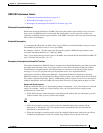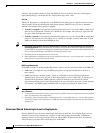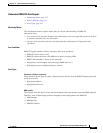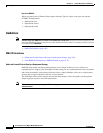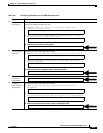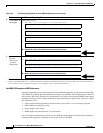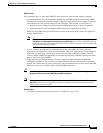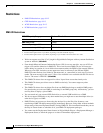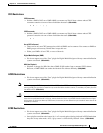
19-6
User Guide for Cisco Digital Media Manager 5.4.x
OL-15762-05
Chapter 19 Content Distribution and Delivery
Concepts
Likewise, the maximum number of times that DMS-CD tries to provision assets for an interrupted
deployment package is constrained by the “Deployment retry count” value.
File Size
When your deployment is scheduled to recur, DMS-CD will either pause or stop the transfer of assets
whose transfer did not finish during the deployment window. DMS-CD uses file size to determine
whether an incomplete file is paused or stopped:
•
Transfer is stopped for any partially transferred file whose size is less than 6 MB, no matter how
much of it was transferred. Transfer of a 100 KB file, for example, must start over again from the
first byte when the deployment recurs.
•
Transfer is paused for any partially transferred file whose size is greater than 6 MB, no matter how
little of it was transferred. A file whose size is 1.6 GB, for example, is paused when none of your
DMPs can download more than 200 MB per day.
Tip • Calculations of this kind can help you to estimate how far in advance you should schedule the first instance of a
recurring deployment. When you know already, for example, that one-fifth of the data within a deployment package can
transfer to DMP local storage during the deployment window that you reserved, then you know also that the deployment must
recur on at least 5 separate days or your DMPs will not receive their assets in time.
• We recommend that your deployments recur once each day.
• When a deployment is scheduled to recur at any other interval than once per day—such as once per week—then this is the
interval after which any paused transfer will resume.
DMP Group Memberships
Each DMP considers its group memberships when it starts to receive provisioned data from DMS-CD.
•
DMPs that are assigned to only one DMP group apiece accept provisioned data to the best of
their capacity.
•
DMPs that belong to multiple groups, which are scheduled to receive differing deployments
simultaneously, can receive only one of these deployments at a time. When they are the target of
simultaneous deployments, DMPs generate a queue for themselves and receive the various
deployment packages one at a time. Depending on the size and relative importance of one package
over another, such DMPs might sometimes lack assets that you planned for them to have.
Tip You might notice after a DMP joins multiple groups that it runs out of local storage space (on usb_1 or usb_2) faster
than it did before.
• You can use the Play Now feature to deploy an empty playlist to any DMPs whose local storage has kept copies of obsoleted
assets. This method clears local storage quickly.
• Alternatively, when local storage contains a combination of assets—some needed, others not—you can create and deploy
a playlist that includes only the useful assets. The DMPs that receive this deployment will keep what they need and delete
everything else.
Understand Shared Scheduling Features for Deployments
Because DMS-CD uses the same scheduling features that are built into Cisco Digital Signs, you can
schedule assets to be provisioned late at night or at other convenient, planned times. Furthermore,
reporting features in Cisco Digital Signs show you which DMS-CD deployments have succeeded or
failed and show you which files were deployed to each DMP.



